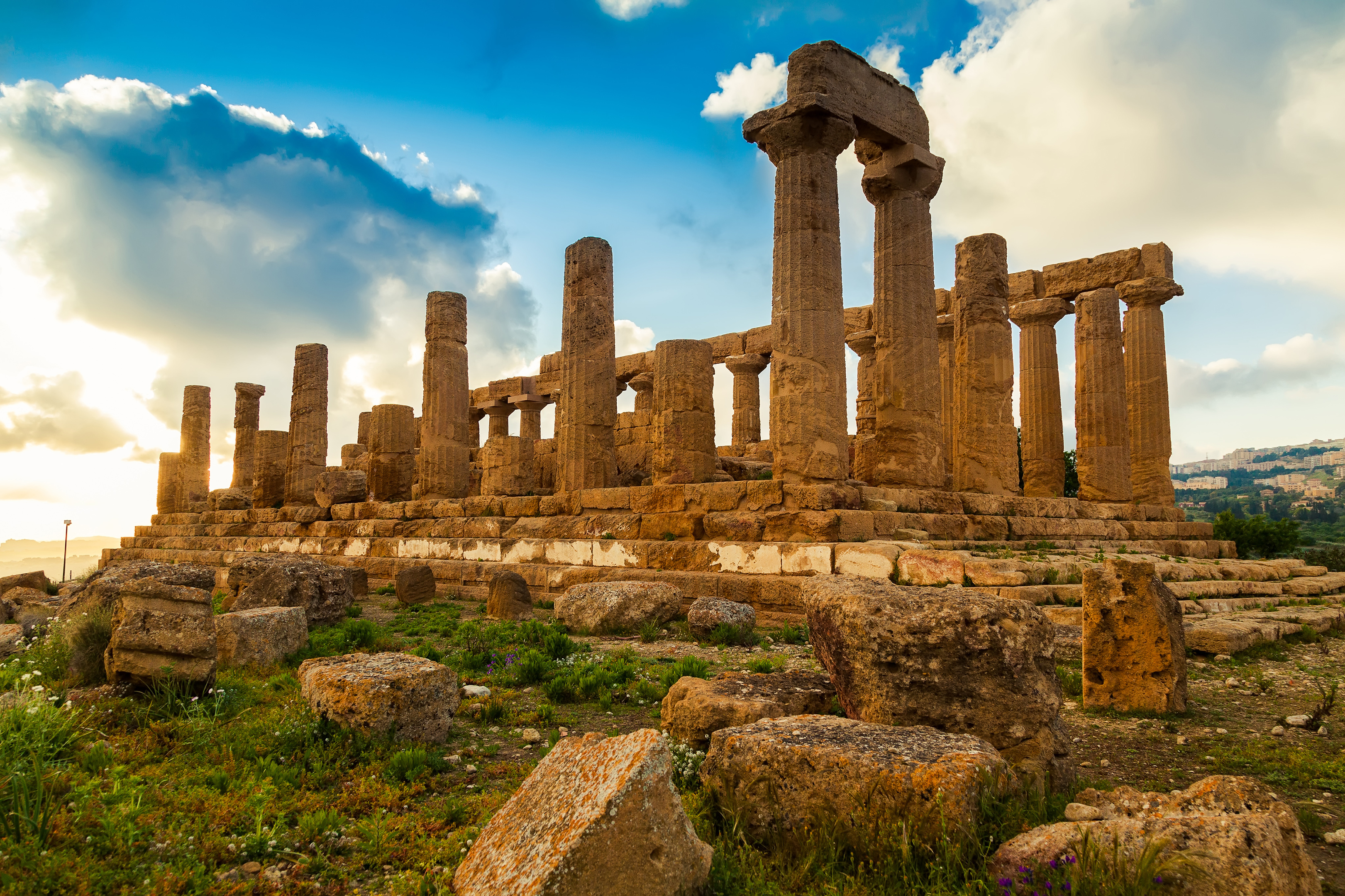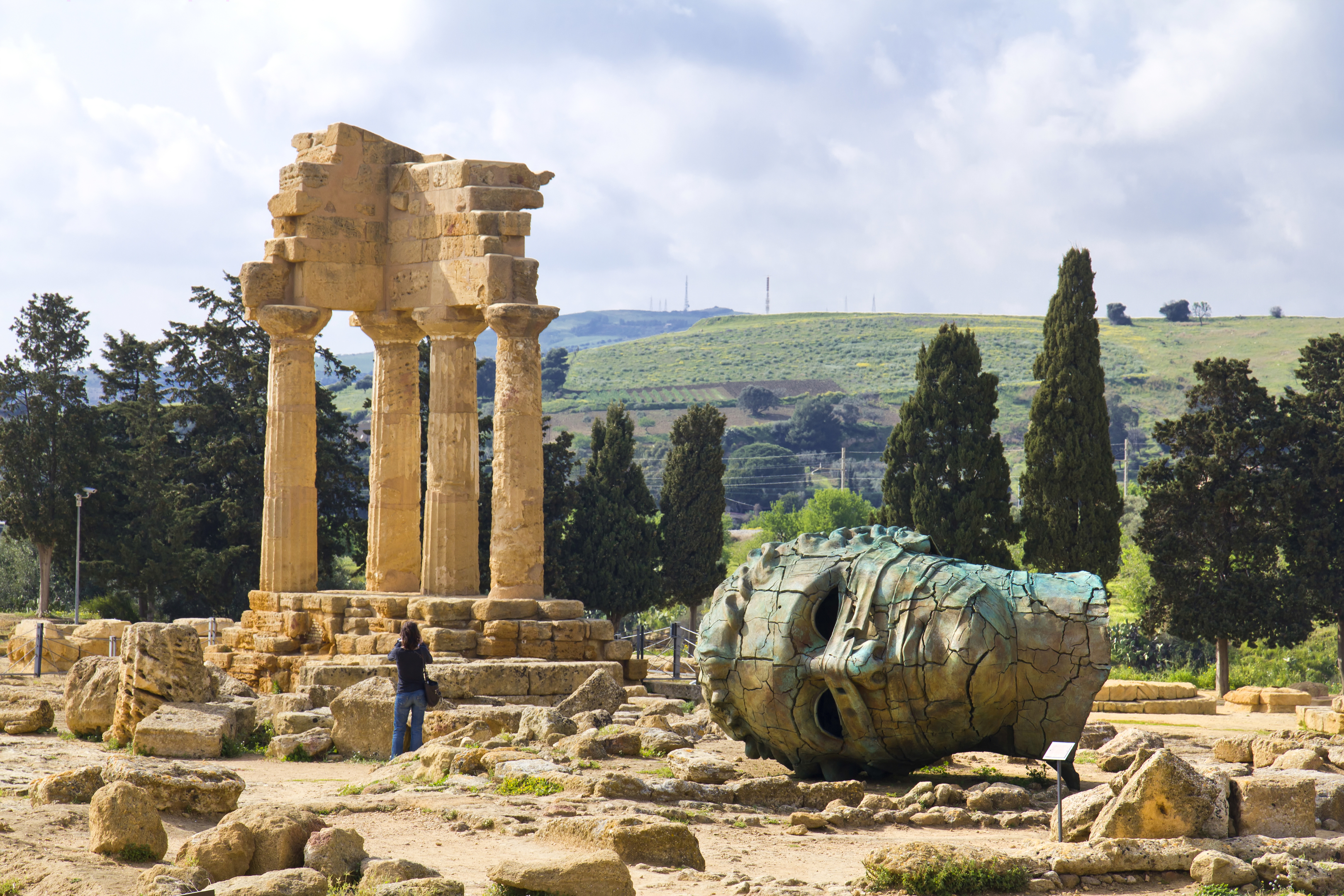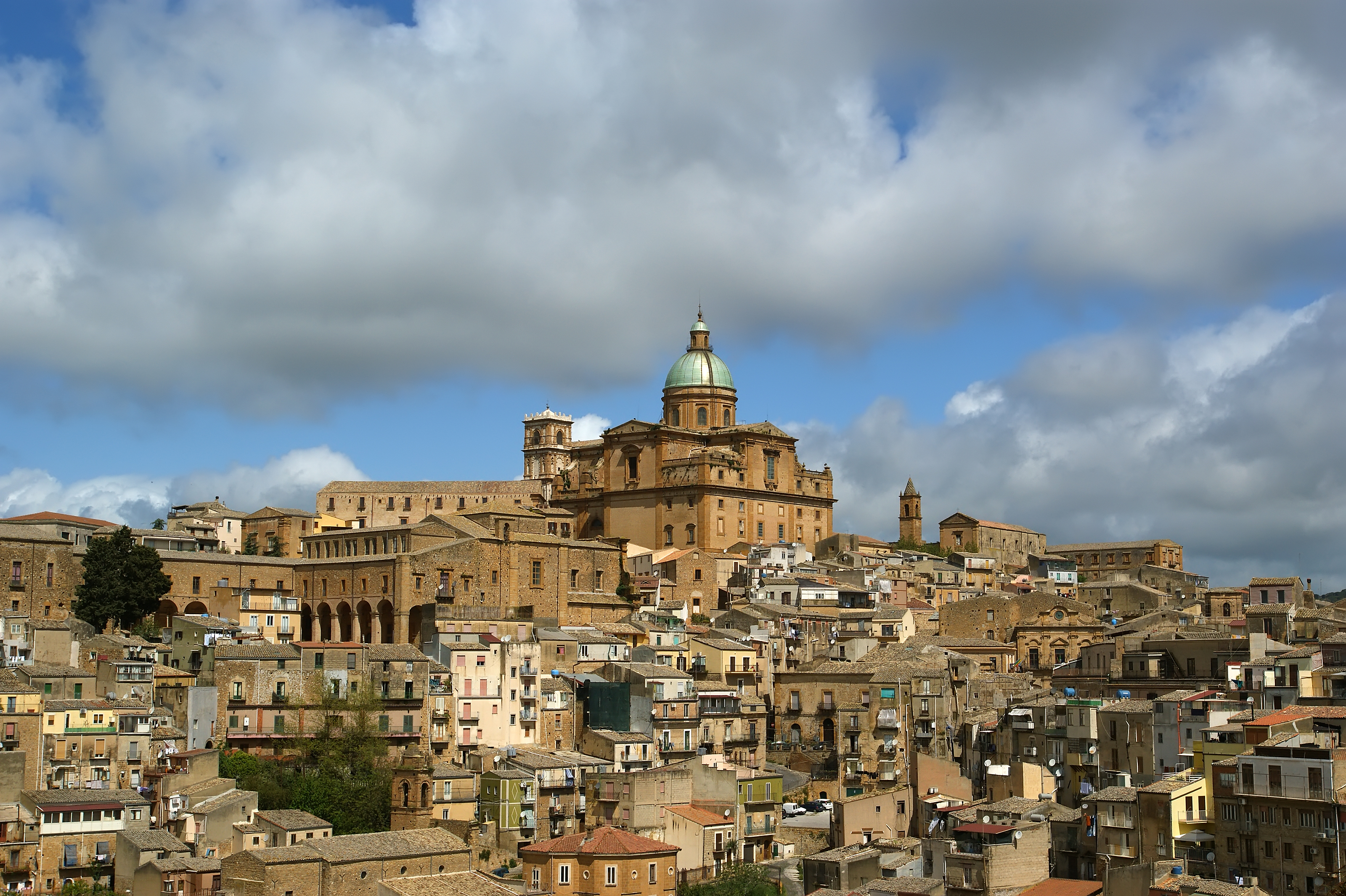
There’s just so much to love about gorgeous Sicily.
I arrive in Palermo and, after spending the night in Cefalu, head 100 miles south down the autostrada to Agrigento.
Back in 600BC this was one of Sicily’s richest and most powerful Greek cities but most of it lies buried under the modern city.
Now only the ruins of seven monumental temples remain. They’re just outside the town and a visit is not to be missed.
You see them as you approach, towering above you and they’re exceptionally well-preserved.
It takes at least half-a-day to explore them fully and it’s best to set out early in the morning before the sun reaches its peak.
From here, head east and take the winding coastal road through olive groves, passing abandoned farm buildings and tomato greenhouses in various stages of decay.
This is the heart of Sicily’s dreamy south which tourists don’t normally see.
It’s definitely worth spending a night at a rather delightful olive farm called Azienda Agricola Mandranova, particularly during harvest time when they’re crushing the fruit.
As you’d expect, the food here is excellent.
Local produce is to the fore and it’s all accompanied by their glorious green olive oil.
If you’re keen on the seaside you won’t be disappointed.
The tiny fishing village of Punta Secca has a small beach and it’s easy to stop for a quick dip.
Further east are long wide stretches of white sand, popular with tourists, complete with sunbeds, umbrellas and ice cream stalls.
Scicli, half-an-hour inland, is one of the south’s famous baroque towns, rebuilt after a devastating earthquake in 1693.
Above the centre is a limestone ridge, the site of the original settlement, crowned by the abandoned church of San Matteo.
As defence became less of a priority the town gradually moved downhill to its present site, although people were still living in caves in the side of the cliff until 1950!
As you’d expect, the views are spectacular and rambling overgrown paths lead past deserted cave dwellings to the church of Santa Maria della Catena.
Back in the centre, the town hall is at the head of the pedestrianised Via Momina Penna.
The street is a long assembly of ornate churches and palazzi with tables outside ready for that early evening aperitif or serious dining.
This is where young boys eye beautiful girls in their finery taking their sunset stroll and the older folk gather to gossip.
The Palazzo Bartolomeo’s grotesque grinning figures, with their bald heads and outstretched tongues, overlook them all.
Noto, around an hour away, was started afresh on a new site after the 1693 earthquake destroyed the original town.
The centre is built on a grid pattern with two distinct sections – the lower town for the political and religious buildings and the upper for the people.
The main street, Corso Vittorio Emanuele, starts at the imposing Porta Reale, runs past the cathedral and is stuffed full of the town’s celebrated buildings.
Ragusa in the other direction was also built on a grid plan after the earthquake. You need to be fairly fit to climb to the new cathedral but the reward is the stunning views.
Another treat is the food in this part of Italy, showing influences from its Greek, Spanish, French and Arab invaders.
It’s often excellent value and caponata – a tasty salad made with aubergines, olives, capers and celery – is a good starter.
Try pasta con le sarde – pasta with chopped sardines, onions, fennel, pine nuts and raisins – but leave room for dessert.
Cannoli are tubular shells of fried pasty stuffed with a sweet creamy ricotta filling and are irresistible.
Top it all off with some world famous Sicilian wine and you’ll soon be reluctant to ever come home.
Prestige Holidays (visit prestigeholidays.co.uk or call 01425 480400) offers a five-night break in Sicily, including car hire, from £429 per person.
READ MORE
Picture perfect resort of Lake Garda hits all the high notes
MasterChef’s Gregg Wallace’s dream honeymoon in Italy

Enjoy the convenience of having The Sunday Post delivered as a digital ePaper straight to your smartphone, tablet or computer.
Subscribe for only £5.49 a month and enjoy all the benefits of the printed paper as a digital replica.
Subscribe
